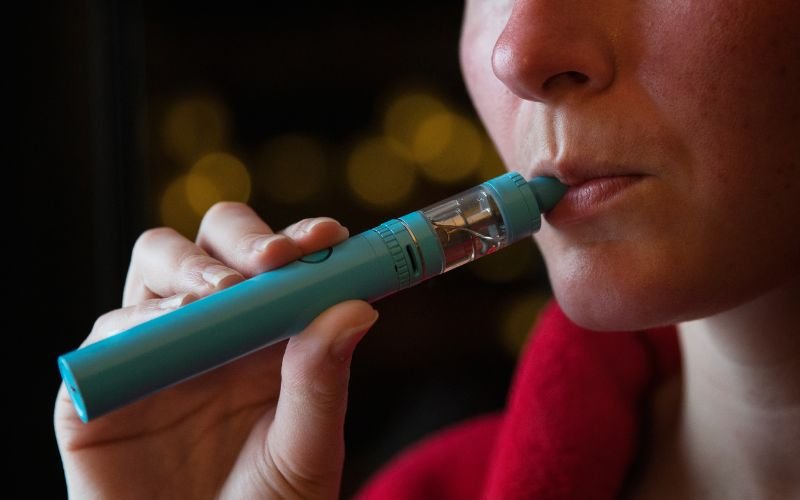Hypnosis to Quit Vaping: How does hypnotherapy work?
A new trend has been emerging since 2003: Vaping.
Even though it’s been marketed as “healthier than smoking cigarettes”, it’s still a shortcut to cancer, heart disease, and other lung issues.
In my opinion, it’s more difficult to stop vaping than smoking cigarettes because of the huge convenience factor. In just a few puffs one becomes hooked on the habitual part of vaping. Even though the nicotine intake is not high, there is still an unbreakable habitual issue.
Thankfully, with hypnotherapy, you can stop vaping altogether. Hypnosis allows you to focus on the habitual part of the addiction as well as the chemical part. Here is how it works:
Vaping vs Smoking
Vaping is known to be less chemically harmful than cigarettes but it’s still very harmful for the lungs and heart. In 2021, John Hopkins University identified thousands of chemicals in vapes, many of which are still unidentified. In contrast, cigarettes contain about 7000 chemicals most of which are toxic. Regardless of which, you would be ingesting deadly chemicals that will guarantee a shorter life span.
As a hypnotherapist who helped hundreds of people with both stopping smoking and vaping, I can confidently say that addiction vise, vaping is much more dangerous than smoking. A big portion of smokers smoke cigarettes complaining about the smell, the taste, coughing and wheezing, and having to go out to smoke every single time. Eventually, these annoying features turn into a strong motivation to quit smoking for good.
The opposite happens with vaping. Even though there is still nicotine and other chemical harm affecting the body, there is still the convenience factor. Vaping can be done anytime, anywhere and there is no smell or bad taste; making it perfect to vape at incredibly high frequency. Most of my clients report vaping throughout the day, losing count or measure.
What works to quit vaping?
There are a few techniques you can try to quit vaping on your own. Some people report finding success with some mental techniques to optimize success.
Mindfulness is one of the most helpful techniques to stop any addiction. Behind addictions, we usually have triggers that lead to the action. Mindfulness can help with becoming aware of the triggers to avoid caving in.
Another technique is focusing on your breath. The only relaxation response one can get with vaping comes from the accompanying deep inhales and exhales. You can still practice similar breathing, even without the vape. This will help you realize how much of the relaxation and relief comes from simple breathing.
Another tool is keeping the vape in a ziplock bag. By doing this, you can have more control over the unconscious habit portion of the addiction. Every time you open the bag to vape, you would be making a conscious decision to vape.
How does hypnosis work to stop vaping?
Hypnotherapy works much more powerfully than all the options listed above. By working with hypnosis, you would have the subconscious mind working for you, rather than against you. Here is how it works:
Hypnotherapy can help quit vaping completely by addressing both nicotine addiction and habitual dependency simultaneously.
- Reprogram the subconscious mind:
It’s difficult to stop vaping on your own because your subconscious mind probably associates vaping with a positive feeling. This doesn’t make much sense, but hear me out! Whether you vape to be focused or relaxed, to give yourself a break, or to feel comfortable; the urge for vaping often arises because of a positive need unconsciously.
During hypnotherapy, we work with all these unconsciously created positive associations that keep you circling back to vaping. After hypnosis, you can finally see the vape for what it really is: A killing machine!
- Replace the habit
At the same time, it’s important to fulfill the emotional needs (relaxation, focus, relief, comfort) that are associated with vaping. These needs are usually crucial needs for our well-being and happiness. It’s inevitable to circle back to vaping unless these needs are met.
Hypnosis is an influential technique to implant the seeds for a new positive behavior instead. These replacements could be anchor movements, comforting keywords, or breathing techniques. No matter what your new habit is, it will be easy for you to implement it in your life with the help of hypnosis.
- Set your mind to motivation
Someone who is ready to stop vaping usually has clear reasons in their mind. However, when trying to do it alone, the habit takes over and motivation dissipates.
On the contrary, once the subconscious mind is set on the motivation and motivating reasons, remaining free of vape will continue. This is why hypnosis is one of the most helpful techniques to stop vaping!
- Set a different expectation subconsciously
Our mind works with habits and expectations. If you expect to vape tomorrow, be sure, you will vape tomorrow. This aspect of the mind is very repetitive yet very potent. Hypnosis allows us to use the same mechanism for the positive!
During hypnosis, your hypnotherapist can implant different expectations for the future in your mind. Especially during hypnosis, the time concept diminishes and your mind can perceive mental images as if they are happening right at this moment!
Can you hypnotize yourself to stop vaping?
It’s possible to try self-hypnosis to quit vaping and get positive results. Beware that you’d be relying completely on yourself and yourself only, which may not be very effective when it comes to challenging nicotine and habitual dependency.
Additionally, being unsuccessful in hypnotizing yourself may be discouraging and result in a loss of trust in hypnosis in general; which is actually a very successful technique if you had worked with an experienced professional.
Working with a clinical hypnotherapist to help you during this process is the best choice really because not only their techniques will be more effective and work quicker but also, they can give you tips and tricks to minimize withdrawals.

